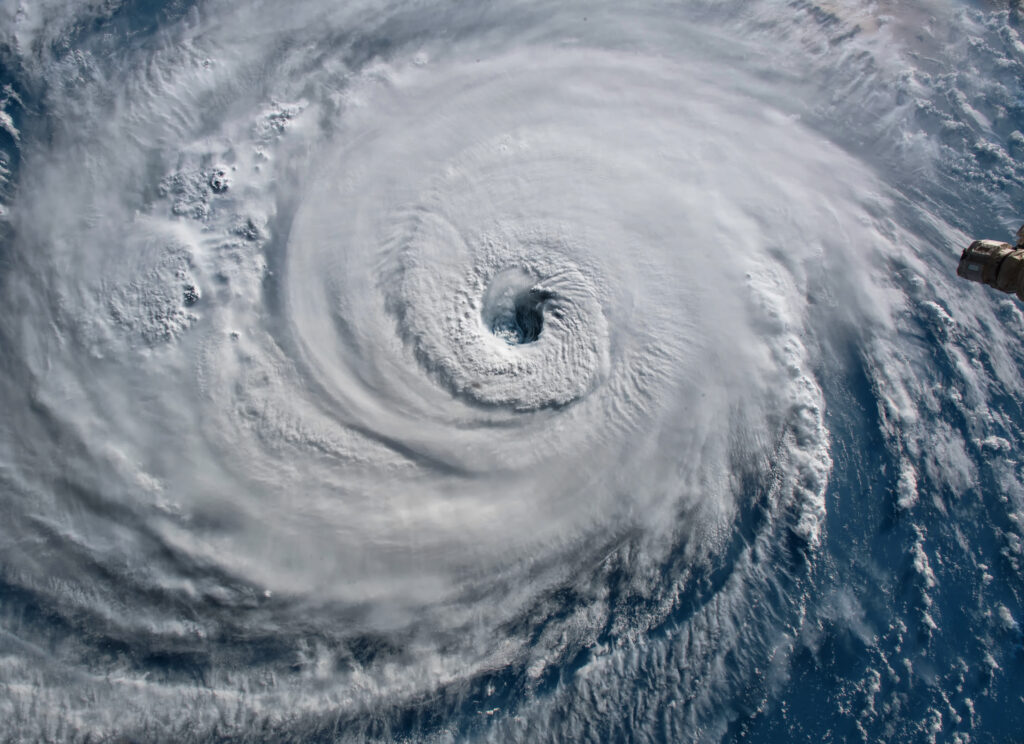The Avid Core team is donating to Imagine Waterworks, a BIPOC and trans-led mutual aid response network based in New Orleans, that is filling immediate needs following Hurricane Ida. We encourage you to join us to see where you can help—financially or otherwise—and to seek help when you need it.

“A hurricane is expected tomorrow,” my husband said as he joined our children and me along the rocky Jamestown, Rhode Island beach. I had heard the emergency alert moments earlier but hadn’t had a chance to check the notification on my phone. The news came as somewhat of a surprise—New England isn’t exactly a hotbed of hurricane activity, and the area hadn’t been directly hit by a hurricane in 30 years. The sun was shining—not even a cloud in the sky—and the air was calm. Could a hurricane really be on its way?
The friends I had been vacationing with were equally confused. They had traveled from landlocked states and the West Coast. “Is it a hurricane watch or warning?” asked one friend. “Which one is the one we have to worry about?”
Having supported emergency planning projects with the Department of Homeland Security, I knew how important it was to be prepared as we faced Hurricane Henri’s landfall (later downgraded to a Tropical Storm). Our experience, my friend’s questions, and this week’s news from the devastating Hurricane Ida made me realize the importance of good communication from all sides in an emergency.
For Officials:
- Share information at regular intervals – Situations evolve and having updates reassure those impacted that you are a source for up-to-date information. During Henri, we went 12 hours without hearing an official update. That gap made me question whether anything had changed and if our plan to ride out the storm was the right one.
- Update official social media accounts – Officials should send regular social media updates during an emergency and confirm accuracy before posting. Misinformation can spread widely online during an emergency and those impacted need to know they can trust official accounts.
- Have a plan for reaching members of the public without Internet or phone access – Rural communities are often among the most impacted during a hurricane. Officials must have a plan in place for reaching these community members and ensuring they have access to information that will keep them safe. The vacation home we were staying at didn’t have a television, but we did receive an update to the home’s landline and answering machine.
For Those in the Path of the Storm:
- Follow official accounts on social media – These include local governments, police and emergency services departments, as well as reputable local news outlets.
- Download the FEMA app – This app provides alerts for severe weather and tips on how to stay safe before, during, and after an event. You can also message loved ones and apply for federal disaster assistance through the app.
- Know the difference between watch and warning. Here’s a helpful tip to remember the difference: Watch = time. You have time to prepare. Warning is imminent and immediate action should be taken to protect life and property.
- Charge your phone and conserve battery as much as possible – During Henri, we turned off our phones to conserve battery power and to reduce competition for data with first responders. Also consider turning off notifications for nonessential messages and apps. If you lose power, you will want to have as much battery life as possible.
- Choose someone outside of the danger zone as a central contact – Establish an emergency contact beforehand that lives outside of the affected area. This reduces the number of calls/texts you have to make and ensures that your loved ones have a secure person to get updates from.
- Review the Hurricane Guide from Imagine Waterworks – This guide is focused on Louisiana but includes helpful checklists and tips for all areas facing hurricanes.
For Loved Ones Worrying from Afar
- Volunteer to be someone’s central contact – Have a list of contacts you will need to share their information with. Keep your phone available and in a good service area to receive updates as they can get them out.
- Don’t bombard people in the danger zone with messages – Help those impacted to conserve their phone batteries by only messaging when necessary or by reaching out to someone’s central contact instead of them directly.
- Read this advice on how to reach out to flooded friends after the storm – Asking “what can I do?” puts the burden on the impacted person to come up with a way to make you feel useful in an emergency. Instead, ask more specific questions like, “Can I pick up supplies at the grocery store? Can I call someone for you?”
During Henri, we followed the advice of local officials sent via an alert service to the vacation home’s answering machine and were able to fill up our car’s gas tank and secure some* water. They also advised that we secure enough food and medications to last for three days.
We charged our phones and continued to check the local police station’s social media account for any evacuation orders. Seeing none, we closed the windows and doors of the vacation home and went to bed.
I woke up in the morning to find the normally pristine view of the bay clouded by heavy rain. I checked the National Weather Service, which had warned that the time for preparations had passed and to stay inside. The power went out and my resourceful friend shared some waterproof matches she kept in her car to light the gas-powered stove.
Several hours later, the wind and rain had calmed. We checked the radar on our phones to make sure that the storm had passed and that it was not just the eye of the storm, and we headed outside to assess the damage. While trees had fallen throughout the neighborhood, taking out power lines, the predicted storm surge and associated flooding never materialized.
We were lucky in this situation, but I was grateful for this test of my own emergency communication plan. It helped us stay calm and to know where to turn for information. Clear communication from all sides is key to effective emergency response.
*The advice of most emergency planners is to secure enough water for each person for three days, which is about three gallons per person. Given the emergency, we were only able to find one 24 pack of water, which was about 1/9 of the recommended provisions.
